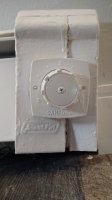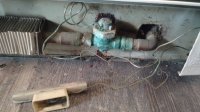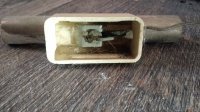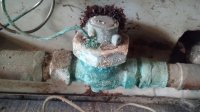vlad_nada
New Member
- Messages
- 5
- Reaction score
- 0
- Points
- 1
Hi, I own a condo built in 1972. There are 9 other units in the building. We have baseboard heating powered by a steam boiler. The Danfoss RA-33 Thermostatic Operator separate remote mounted dial and sensor is installed on the baseboard.





Some questions that I had:
1. How does it work? How is a thermostatic operator different then a TRV?
2. Is the condition of the valve/capillaries a problem?
It works. There are NOS units on ebay and danfoss does list the replacement valve and operator for the RA-33.
2. Can this be upgraded to a smart thermostat like nest?
Ive read about some issues w/ boiler temps/cycle times in homes but havent seen anything on condos or apartments. It would just be adjusting the valve and not turning the boiler on/off so I dont think it would have the same issue right?
Any info is appreciated. Thanks!
-Dan





Some questions that I had:
1. How does it work? How is a thermostatic operator different then a TRV?
2. Is the condition of the valve/capillaries a problem?
It works. There are NOS units on ebay and danfoss does list the replacement valve and operator for the RA-33.
2. Can this be upgraded to a smart thermostat like nest?
Ive read about some issues w/ boiler temps/cycle times in homes but havent seen anything on condos or apartments. It would just be adjusting the valve and not turning the boiler on/off so I dont think it would have the same issue right?
Any info is appreciated. Thanks!
-Dan
